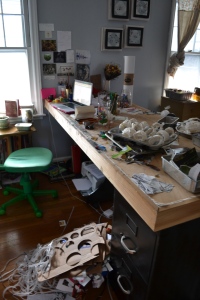I recently read a really lovely post on Brain Pickings by my new best friend Maria Popova.* In true Brain Pickings fashion, it touches on a lot of things, but the one of those things that really struck a chord with me was silence- including its role as a necessary catalyst to creative acts and deep searching.
In a 1986 paper about ‘Wait Time,’ researcher Mary Budd Rowe found that by increasing the wait time (or teacher-silence) after asking students a question by just a few seconds had tremendous changes on both students and teachers. Students answers grew in length and complexity (sometimes as much as 700%), while teachers became more flexible and began to refine their own questions to be more thoughtful and intentional.
Silence comes up in my own teaching practice all the time. To be able to follow student interest or accurately gauge the reaction of an adult learner to something said, I need to be a good listener. I’ve found silence to be a great tool to help build this skill (which makes sense- how can I listen if I don’t shut-up now and again?). It’s empowering to learners to have the power to co-construct a conversation but more selfishly, it feels good as an educator to know that it’s not up to me to fill time or perform.
That’s not to say that silence is always, or should always be, a zen-like contemplative experience. Sometimes Frequently, we find silence to be uncomfortable or even downright scary. My own completely unscientific hypothesis about why this is is twofold: First, when we pause to listen, we get a chance to hear our own insecurities and small voices, ‘Are they listening? Are they zoning out? Am I boring?’ Second, and even more unsettling, though, is that when we allow for silence we open ourselves up to the Unknown, and to the human mind, little else is as scary as what we don’t know.

Cartoon Network’s miniseries, Over The Garden Wall uses our fear of what we don’t know/can’t see to great effect. It’s also the manifestation of everything I love. Go watch it so we can drink tea together and freak out about how good it is.
In contrast, in the Reggio Emilia approach, foundational to my own approach to working with children and adults, self-enforced silence is seen as selfish. If the aim of education is to foster community and engagement with the world around us, then keeping your thoughts to yourself is selfish- you’re withholding from the group insights which could enrich the conversation.
As with most things, I have two opinions (‘Do I contradict myself? Very well then, I contradict myself…”) Silence is good. Silence is bad. Ultimately, silence is a tool, and like any tool there are times when it’s the tool that’s useful and times when it’s not.
This is true in the home studio as well.
Sometimes I need noise:
and sometimes, I need silence:
What about you-
What audio or ‘visual decibel’ do you need to be successful is it always the same? And if not, then how do you know when it’s time to change?



